Tackling Cleghorn: We Take The 2016 Chevrolet Colorado Z71 Off-Roading
An age-old question asked by many off road enthusiasts has often been, is the off-road package from the manufacturer worth it? Some will tell you yes, some will tell you no. When it comes to those who buy trucks with four-wheel-drive, there are a variety of preferences for different types of people:
-The ones who buy a truck with 4X4 for the resale value only
-The ones who buy the off-road package just for the stickers on the side of the truck bed
-The ones who don’t care about the off-road package because they’re going to modify it themselves
-The ones who buy the off-road package for increasing off-road capability without breaking the bank

The people in the last of the four categories I just mentioned, I write this article for you.
The Colorado’s Z71 package is a $2,105 premium over the LT model and you are wondering if it’s actually worth the money. Well, let’s see what you get for your 2 grand, shall we?
You get:
-A 4.10 rear axle ratio
-Off road suspension (featuring specially calibrate twin-tube shocks)
-Goodyear Wrangler All-Terrain tires
-Z71 decals on the truck bed
-Z71 grille with Z71 badge
-G80 Automatic locking rear differential
-Transfer case skid plate
-Hill descent control
-17” aluminum wheels
Other things the Z71 package includes are heated front seats, a remote engine starter, automatic single-zone A/C, an EZ-lift and lower tailgate, automatically dimming interior mirror and projector-style headlamps. Along with the Z71 package, my test Colorado was equipped with four-wheel drive with a two-speed transfer case.
SEE ALSO: 2015 Ford F-150 FX4 First Drive
It’s important to note that you can get the Z71 package on 2WD Colorados as well, however do not attempt to recreate this test with a 2WD truck as you will get stuck.
Here were the two rules I set for myself: Rule one: Don’t crash the truck. Rule number two: No modification of any sort, as it was a test of how well these trucks go off-road straight from the factory. This meant the removing of anything that was on the truck, but it also meant no deflating of tires.
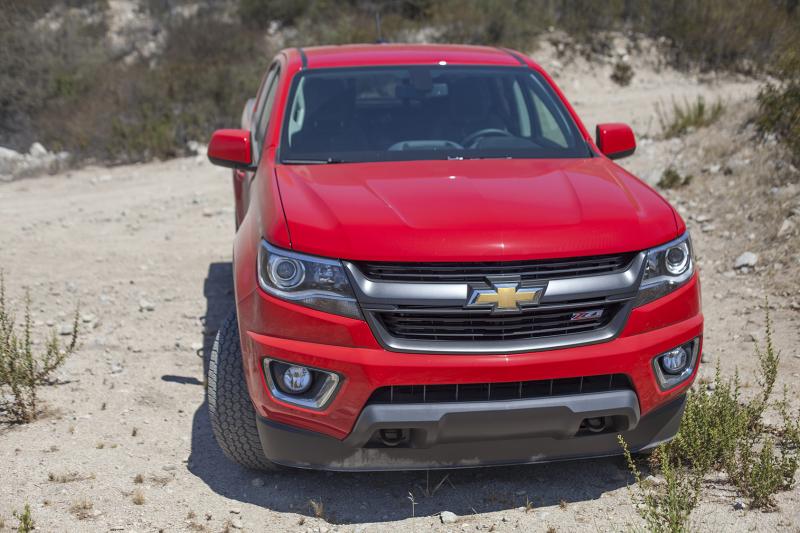
There was one thing I really wanted to modify, which was removing the front air dam. Chevrolet placed the large plastic slab under the front bumper to bump up fuel economy, while sacrificing the ground clearance and approach angle. After inspecting it, I found out that it would be difficult to remove due to top mounted torx screws and it would also be breaking my second rule. I decided to leave it on, which became a decision I later regretted.
The proving ground for this event was Cleghorn OHV trail in San Bernardino, just off Interstate 15. It’s a 15.2 mile-long stretch of winding dirt trails with varying levels of elevation. Driving on Cleghorn requires an adventure pass. A single-day pass costs $5 and can be purchased here.
Before tackling Cleghorn itself, I decided to go on the small trail next to it. At first I left the transfer case in 2HI, but after the first set of very big hills I switched it to 4HI. Easing on the throttle, I gently made my way up and down the other side of the hill, only to find an even bigger hill.
After taking a second look, I discovered it was actually a mountain, one with an extremely steep grade too. I switched it into 4LO, which requires you to switch into neutral and to be under 3 mph and slowly made my way up the mountain. As steep as it looked from the bottom, it was even steeper going up. Despite the steepness, in 4LO the truck pulled itself up no sweat. Satisfied with the climb, I completely forgot that big mountain climbs have big mountain descents and experienced a terrifying descent down.
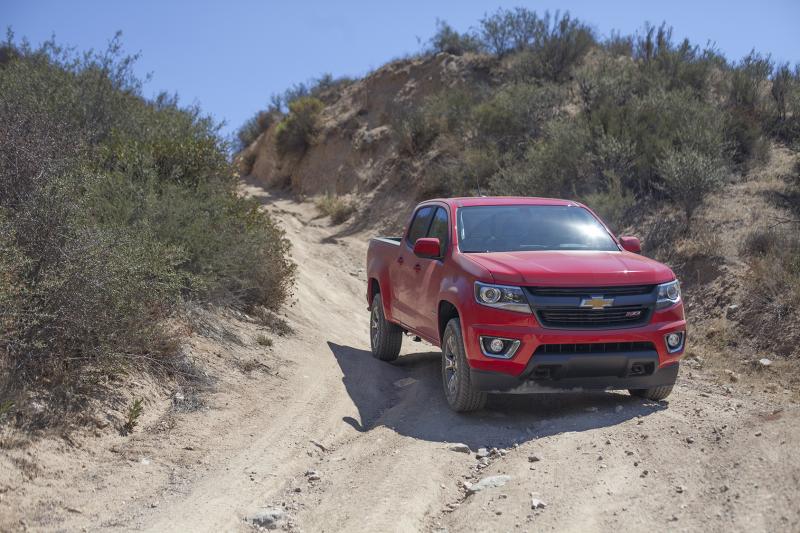
Many hills later, I retraced my steps and a few minutes later I came back to start Cleghorn.
At the start of Cleghorn, I switched out of 4HI and back into 2HI because I wanted to see how far a 2WD Z71 would make it on Cleghorn.
The first few miles or so up Cleghorn were no sweat in 2WD, as the tires took on the brunt of the load. After about a good 20 or so minutes, I found my first side trail. Cleghorn’s side trails offer a challenge to those who wish to divert away from the main trail, which is rated novice. The side trails led back to the main trail, so you don’t have to worry about ending up somewhere else.
As I climbed up the rocky hill, I heard a scraping noise coming from the front. It was the front air dam. On the first, small trail and the main Cleghorn trail there was no real obstacles, but here, on the side trails were where slow, methodical crawling had to take place. I carefully made my way up the hill, inching forward to prevent any more scraping of the air dam.
When I got to the top of the hill, there was a group of young men parked at the start of a large mountain. The one at the start of the trail took the charge in his Jeep grand cherokee, climbing up the mountain with ease. The two Toyota Hiluxes later followed suit, then it was my turn. I waited for the small thud from the transfer case to let me know I was in low range, then I began my climb. Easing on the throttle and being gentle up the hill, I managed to make it up the mountain easily, where I saw that the two Hiluxes and jeep had pulled over to let me by.
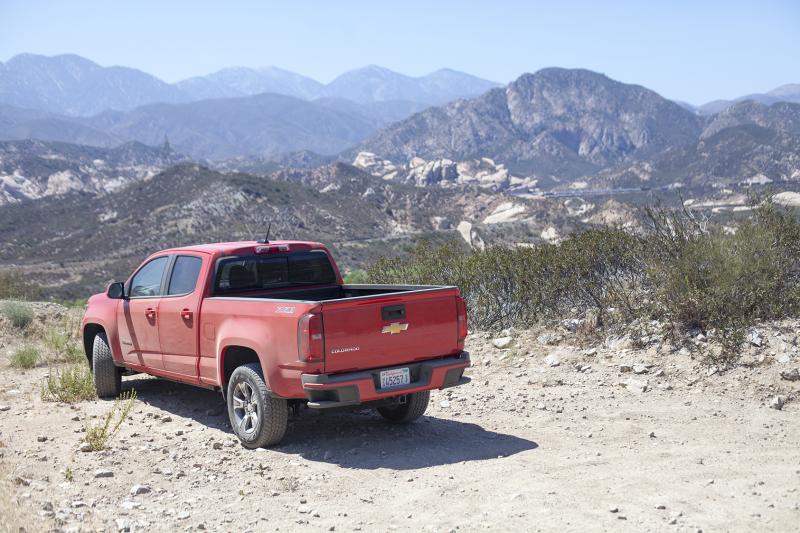
After about five minutes of being back on the main trail, I accidentally took a wrong turn up a trail which led to a dead end and was littered with big rocks, all which I had to avoid because they were large enough to scrape the air dam. I ended up missing a few and was met with a nails-on-chalkboard screeching as the dam and skid plate made contact with the rocks.
The men in the Jeep followed me up the trail- only realizing that it was a dead end after they saw me making a three-point turn at the top of the hill. As I navigated my way back down the rock minefield, I missed one again, only this time the wheel went on it, and the rock got caught behind the wheel. Lucky for me, the Jeep driver offered to winch me out. Unluckily for me, after the front wheel had rolled off the rock, the air dam hit the rock.
After making it down the trail, I pulled over and inspected the air dam. It had a small crack on where it had landed and hit the rock, but there was also a gap between the top of the air dam and the bottom of the bumper above the crack. A screw had come off from the force of the impact. Gingerly, I soldiered on.
The last side trail I attempted was the most difficult one. The climb up the hill was littered with rocks, slowing the climb up the hill to around 2 mph. The way down was through a slightly curved path in a small canyon with grooves in the ground. I slowly made my way down the hill, as I didn’t want to get the wheels caught in any of the grooves. Then, the rocks came.
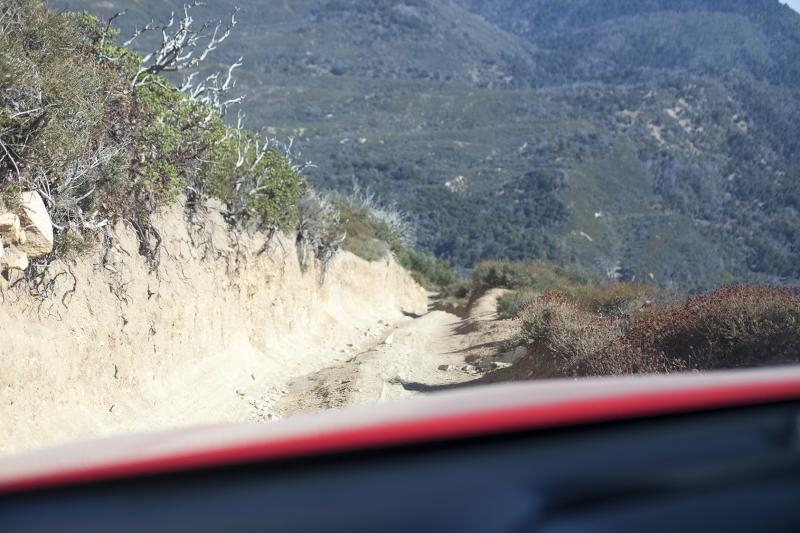
At first there was only a few, but that number was multiplying with every inch around the lazy turn. Soon, the floor was no longer made of dirt, rather it was completely covered in rocks. As the rocks continued to multiply, I noticed a few very large rocks on the way down. I inched the nose of the car onto the rock and put the front end over the rocks no problem. As I drove forward to let the rear wheels down there was a jolt from the rear end as the truck landed.
After making it down the extremely rocky trail, I pulled over to asses the damage. The left side CornerStep had bent upward. I combed over the car for any other damage and didn’t find anything. Fortunately, the CornerStep is a part that bolts on to the bumper and not part of the bumper itself.
I switched back into 2HI and made my way down the main Cleghorn trail. Although at the beginning of Cleghorn there was hardly a difference between 4HI and 2HI, now the Colorado was not doing as well as it was before due to the thicker layer of sand on the ground. After a few miles of feeling the truck struggle I switched back into 4HI.
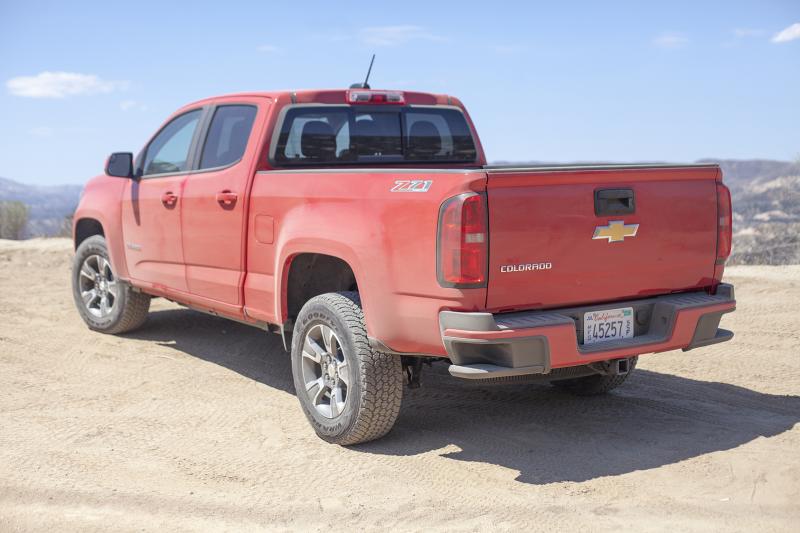
At this point lots of medium-sized rocks were starting to litter the main trail forcing me down to a top speed of about 5 mph. The air dam wasn’t a problem at all here, but anything which doesn’t have much ground clearance overall would have run into a problem. Ten minutes went by, then 30, then an hour. The view was getting monotonous, the ride was choppy and I was getting bored. As I turned a corner, I was greeted with a not-so-distant view of tarmac, followed by some steep descents. Towards the end, I got stuck behind a slow moving Jeep Wrangler who had to pull over to re-fill his tires with air.
At the end of the day, yes, the truck did take some very minor damage, but everything else was in one piece. If you’ve been doubting the Z71 package’s ability to go off road, stop doubting. From everything that I learned during testing, here is what I recommend, if you do buy the Z71 package:
1. Remove the front air dam. If the mishaps in this article haven’t convinced you already that it’s just bad luck, just wait until you scrape it on something and hear that awful noise.
2.Replace the factory skid plates. The factory skid plates for the engine and transfer are really quite small, and you’d really be better off replacing them with thicker ones, especially if you plan to go onto more serious trails.
Since the Colorado employs fancy tech like active shutters behind the grille, why couldn’t there have been a mechanism that retracts the air dam for off-roading and deploys it again when you’ve finished? Putting that aside, it doesn’t change the fact that the Z71 package is a lot of value for the money.
Off-Road performance Score: A-
Off-Road Package Score: A-
Reach Staff Reporter Amou (Joe) Seto here. Follow him on Twitter here.



